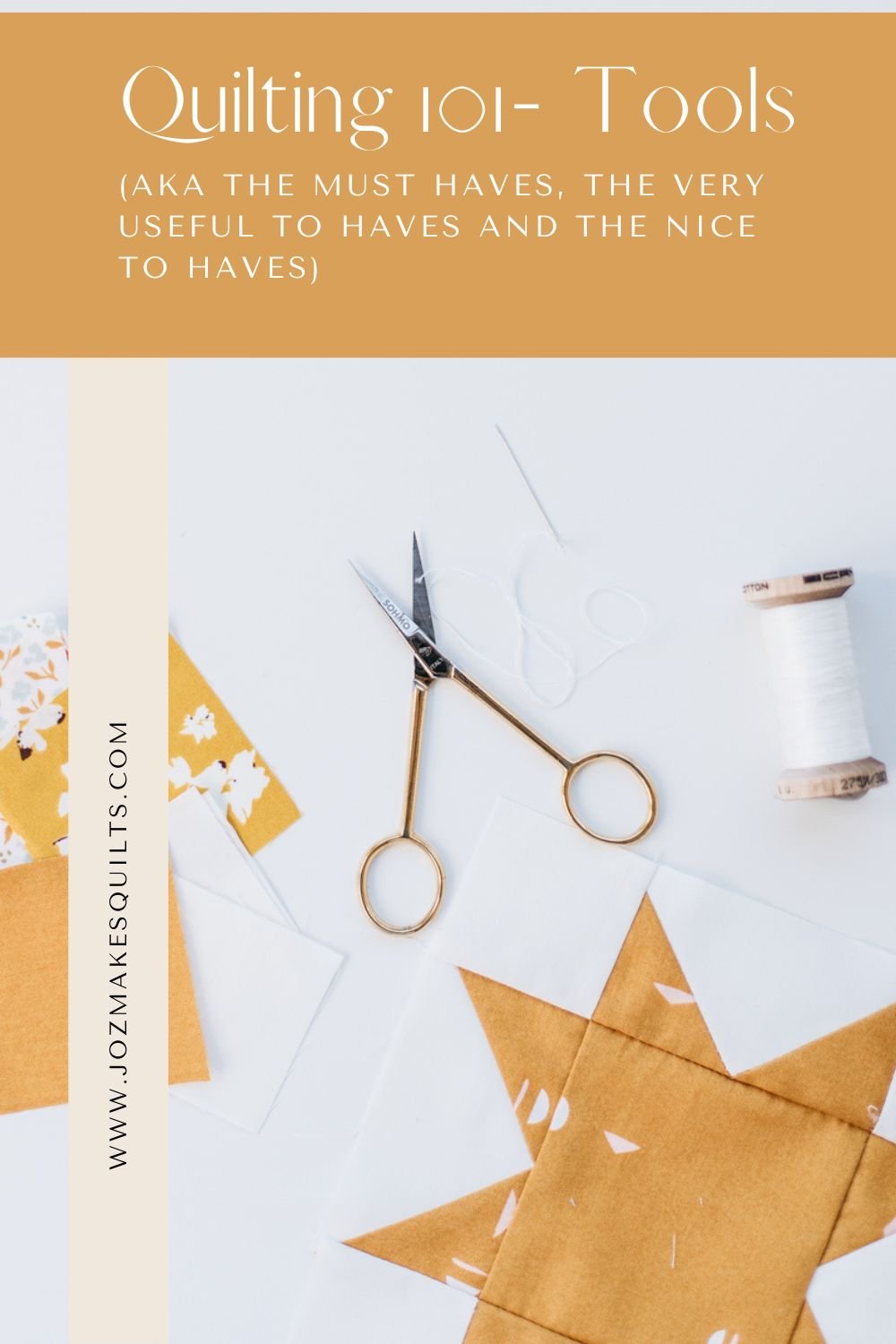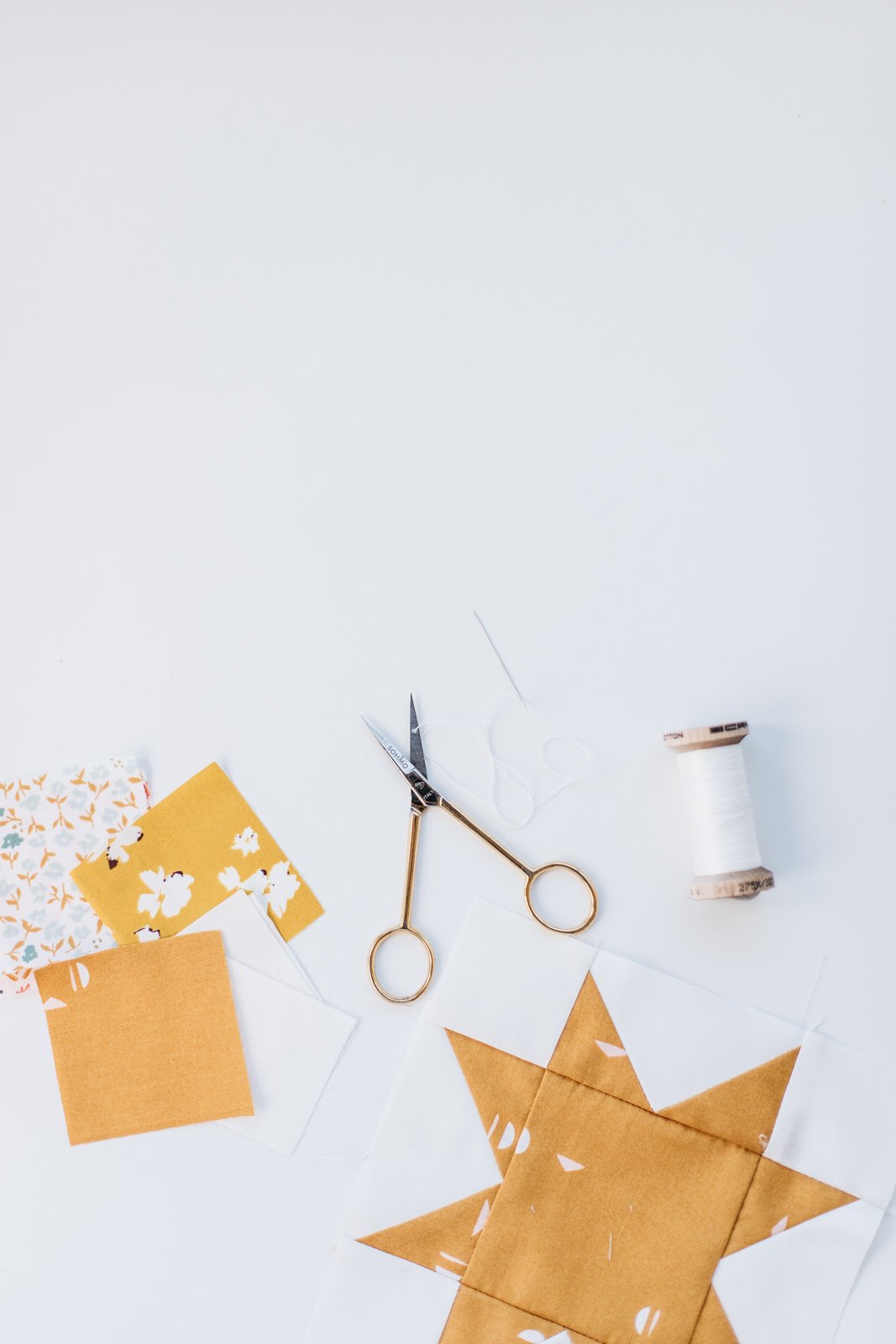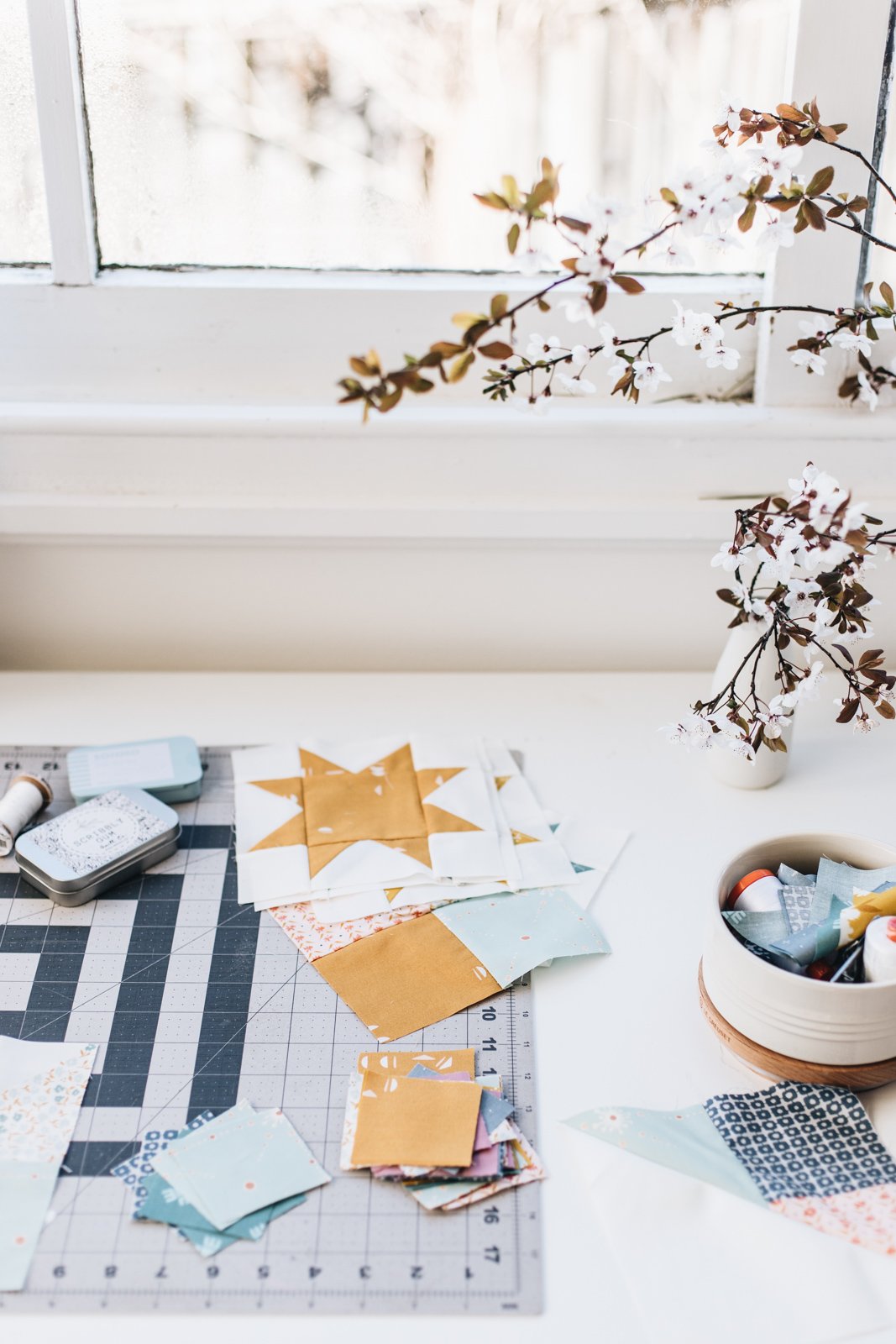Quilting Tools 101 (aka, the must haves, the very useful to haves and the nice to haves)
So you've decided you really want to make a quilt- congratulations and welcome to the world of quilty addiction. But there are so many tools out there- how do you know what you really need, need or is just a nice to have? Let's get started!
I have classified each item into one of the following categories- Must have/ Very useful to have/ Nice to have:
Must have: Tools that are pretty much essential- not having these tools will result in the quilting process being quite a bit more difficult/ or even in some cases unable to complete certain steps.
Very useful to have : These are super useful and will help you a LOT in your quilting. But they are not essential
Nice to have: Definitely not essential and very useful but a bit more superfluous than those in the "very useful to have" category. But they will make the quilting process more enjoyable!
Overall, the “must have” tools are essential for making a quilt, while the other tools can make the process easier and more efficient. If you have the budget, investing in quality tools will save you time and frustration in the long run and will help you create a beautiful, long-lasting quilt.
Some of the links here are to my favourite quilting shops but where they aren't available, I have linked to Amazon. As an Amazon Associate I may earn a small commission from qualifying purchases- thank you for your support !
Must haves:
Sewing machine- You can choose to hand quilt everything (I know some people who do this exclusively) but a sewing machine really makes things a lot easier! It doesn't have to be a fancy one- I made many quilts on my little Brother machine that I purchased for about $150. Here is a summary of the three sewing machines I have quilted on. If your budget allows, choose a machine that has a straight stitch, zigzag stitch, and the ability to adjust the stitch length and tension.
Thread- (Sewing machine thread) Use the best thread your budget allows. My personal favourites are Aurifil and this Sew for good Organic thread. I have sewn many quilts with the 10 spools for $10 thread and it's been totally fine- but I can't guarantee how long it will last :-) . As for colours- totally personal preference. I used white or cream in almost all of my sewing quilting- so this is a great place to start and you can build up the colours as you go. (AU Link)
Rotary cutter and blades- 45mm is the most common one that the majority of quilters use. "But can't I just use scissors?" I hear you asking (well that's what I asked anyway)- technically yes but a rotary cutter will make things SO much easier (not to mention more accurate). I feel I have tried ALL the cutters and blades- my favourite cutter is the 45mm OLFA (it's the only one where the screw hasn't got loose) and my favourite blades are the Scribbly Gum blades- they are SO sharp and last for ages!!
Cutting mat- Go for as big a mat as you can afford. An 18 x 24" mat is a great place to start as it fits a whole fat quarter. Self healing mats last longer but if you can't afford this a non-self healing mat will do the job! Also, I do not recommend a folding mat- it will do the job if you are short on storage space but they don't lie completely flat so whenever you cut over the seam, it doesn't cut properly which is annoying! My favourite cutting mat is the Fiskars 18" x 24" or Fiskars 24" x 36" (both self-healing). A cutting mat will protects your work surface and allows you to make precise cuts.
Big Quilting ruler- Rulers are necessary for cutting quickly and accurately If you are only going to buy one ruler, one that is around 24" x 6.5" or 24.5”x 8.5” is probably the best one to get- you can get the larger pieces and strips as well as the smaller pieces (I love the Creative Grids one- the lines are clear and it has little pads so it doesn't slip)
Basting Spray OR Basting Pins- It comes down to personal preference, but you will need one of these items to be able to baste your quilt sandwich (attach the quilt top to the batting to the backing fabric). Basting spray is much faster (and in my opinion ends up in a much better result) but is in an aerosol can which some people don't like. Basting pins take longer but are cheaper in the long run (as you can use them over and over again).
Seam ripper / Quick-unpick- Yes you will sew the wrong piece of fabric to the other piece.. or sew it on really crooked. Some mistakes can definitely be left there ("finsihed is better than perfect") but some just need to be fixed :-)
Little fabric scissors/ snippers- To trim all your threads- I'd recommend a few pairs (although more than one is more of a nice to have) so you can have one with your machine, maybe one with your hand sewing etc. Any will do, but I love snippers like these.
Iron and Ironing Board Iron- Ironing is a super important step in quilting - but if you’re a clothes ironing hater like me, don’t let this turn you off it - I don’t mind quilting ironing and despise clothes ironing ! An iron helps for pressing seams and ensuring that the fabric lies flat. It also helps to set the stitches and can make the pieces more accurate. Your regular iron will work just perfectly but if you get really into quilting, I love my Oliso (it has little legs so you don’t have to tip it up after you’ve used it!)
Very nice to haves:
Sewing machine paraphenalia
I started sewing on a little Brother machine which absolutely did the job until I caught the quilting bug and I upgraded (twice!). But if you'd love to make quilting just a little bit easier but are not in the market for a new machine (either it's not in the budget or perhaps you aren't really sure if quilting is your thing yet), here are three tools you can add to your machine that won't break the bank but will make quilting a whole lot easier!
1/4 inch seam foot for your sewing machine- Quilting seams are generally 1/4 inch. So it's not essential but if you can purchase a 1/4 seam foot (sometimes these are included with your machine but otherwise you can purchase them separately), it will make it a lot easier to keep your seams consistent which results in a much neater quilt. I couldn't believe this existed when I upgraded my machine- it made my sewing SO much more accurate not to mention easier. For those of you who haven't seen one before, this is a foot that you can use that essentially has a little "barrier" at 1/4 so you can use it to keep all your seams at a perfect 1/4".
Guide bar- A quilting guide bar is a small tool that attaches to your sewing machine foot and is used to help guide the fabric when sewing straight lines, meaning you don’t have to mark them. As the fabric is fed through the sewing machine, the guide bar helps to maintain a consistent distance between the lines of stitching (without having to mark)
Walking foot- A walking foot is a sewing machine foot that helps to feed multiple layers of fabric evenly. It is useful for quilting and sewing through thick layers.
Other tools
Other quilting ruler- A little quilting ruler (for example a 4.5" x 4.5" or 6.5" x 6.5" or other sizes like a 12" x 4.5" will make cutting the smaller pieces and trimming certain shapes much easier. If you only wanted one extra ruler in addition to your long ruler, i'd probably go for the 6.5" x 6.5" square one. (If you really want to get into quilting, you can purchase an assortment, such as this one).
Fabric Scissors- If you have a rotary cutter, you can probably get away without fabric scissors - but they are nice to have! I love these ones from Sohmo, although they are quite pricey (the thing about fabric scissors is once you have a pair of your own, you realise why your mum used to yell at you when you used her fabric scissors to cut paper! :-)
Hand quilting needle and thread- if you are planning to hand quilt or hand bind, these become a must have (I’ve written a post about hand quilting if you’d like to find out more about this process!) (AU Link)
Nice to haves
Pins- I personally don’t use pins but they can be useful for holding fabric pieces together while sewing. Choose pins that are long enough to hold multiple layers of fabric.
Wool ironing mat: A wool ironing mat is a useful tool in the quilting process because it provides a firm, flat surface for pressing fabric. Wool is a natural heat conductor and absorbs moisture, which helps to set the seams and create a crisp, flat surface. Unlike traditional ironing boards, wool mats don't reflect heat, which can cause the fabric to become distorted.
Tailors Clapper: A tailors clapper is a wooden tool that is used for pressing seams. It is particularly useful for pressing seams open or flat- The clapper is placed over the seam and pressed down firmly, which helps to set the seam and create a crisp, flat surface. It also helps to eliminate any puckering or distortion in the fabric. Additionally, a clapper can be used to press seams when working with bias edges, which can be prone to stretching and distorting.
Cluck cluck sew diagonal seam tape: Cluck cluck sew diagonal seam tape is a specialised tool which is useful to make half-square triangles (HSTs). The tape is placed on your sewing machine, and it provides a guide for sewing a straight line on the diagonal which means you don’t need to mark your fabric. (AU Link)
Quilting gloves: Quilting gloves provide grip and control when quilting. They allow you to move the fabric smoothly and prevent slipping. (I don’t personally use them but I know lots of people swear by them!)
Binding clips: Binding clips are a useful alternative to pins for holding the binding in place while sewing. They are easier to use and don't leave holes in the fabric.
I hope that helps! Let me know if you have any questions or if you think i’m missing anything :-)




